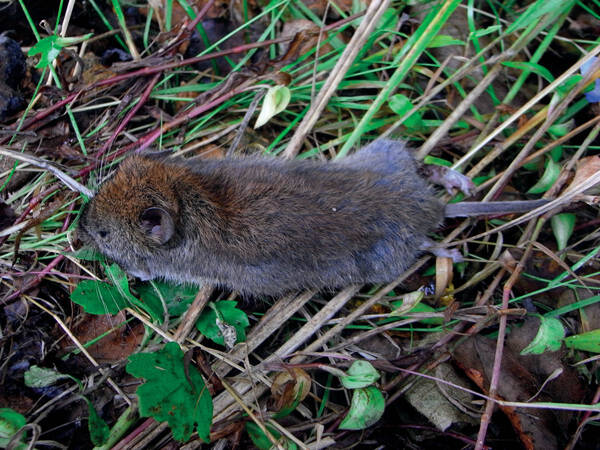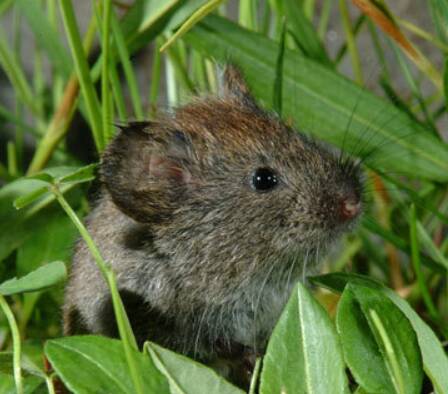Clethrionomys rufocanus
IUCN
LCBasic Information
Scientific classification
- name:Clethrionomys rufocanus
- Scientific Name:Clethrionomys rufocanus,Myodes rufocanus,Gray Red-backed Vole,Clethrionomys rufocanus,Hypudoeus rufocanus,Red-haired mouse
- Outline:Rodents
- Family:Rodentia Cricetidae Genus
Vital signs
- length:100-122mm
- Weight:
- lifetime:
Feature
It has a stout body, large ears, short limbs, a reddish-brown back, grayish-yellow sides, and dirty white fur on the belly.
Distribution and Habitat
It is widely distributed across the Palearctic. In China, it is distributed in northern Xinjiang and the northeast region. Abroad, it is distributed in Norway, Sweden, Finland, Russia, Mongolia, the Korean Peninsula and Japan.
The brown-backed pheasant is one of the typical forest rodents, living in coniferous and broad-leaved mixed forests, broad-leaved sparse forests, poplar and birch forests, larch forests, oak forests, riverside forests, terrace forests and slope forest edges.
Appearance
Among the species, it belongs to the larger species. Body length 100-122. The tail is medium, 27-35mm, about 30% of the body length, and the proportion is larger than that of the red-back. The back of the body is brownish red. The side color is significantly lighter, and the abdominal hair is yellowish white. Its main identification features are the skull and teeth. The posterior edge of the palatine bone is a transverse bone plate, does not form a longitudinal ridge, and has no pterygoid fossa. There are only 2 angular processes on the inner side of the 3rd upper molar.
Details
The brown-backed croaker belongs to the subfamily Arvicolinae. The species status is very stable, but the genus status is controversial. The species was named in 1846, and Miller (1900) established the subgenus <Craseomys> and regarded the brown-backed croaker as the only species of the subgenus. Later, Thomas (1907) promoted <Craseomys> to a genus, and later, many scientists regarded the genus <Craseomys> as a synonym of <Clethrionomys>. Musser & Carleton (2005) believed that the earliest name of the group was <Myodes>, and restored <Myodes> as the genus name of the group, and regarded <Craseomys> as a synonym of <Myodes>. Tang et al. (2018) confirmed through molecular methods that <Craseomys> is an independent genus. Craseomys is a typical northern species, distributed in northern coniferous forests and shrubs. When the population is large, it will cause certain harm to the forest, feeding on seeds and nibbling on seedlings.

The brown-backed pheasant is active at night and is occasionally seen during the day. It does not hibernate and lives in the dead branches and leaves in the forest. Its holes can often be found at the roots of trees or beside fallen trees. Sometimes it uses rotten tree trunk holes as nests. In winter, it moves under the snow layer, with holes on the snow surface and crisscrossing tunnels in the snow layer.
The brown-backed beetle is omnivorous. In addition to plants, it also feeds on small animals and insects. Its diet has obvious seasonal changes. In spring and summer, the brown-backed beetle prefers to eat the green and tender parts of plants. In addition, it also likes to eat plants with high fiber content, such as the stems and leaves of Lespedeza and Rubus odoratus. Especially in early spring, the brown-backed beetle also likes to eat some small animals, such as frogs and some insects of the order Coleoptera. After autumn, the green parts of the plants that the brown-backed beetle likes to eat mostly wither or turn yellow. The degree of fiberization increases. Therefore, in addition to eating some residual green parts, they often change to eating plant seeds with higher nutritional content. In winter and early spring, in addition to eating seeds, they often gnaw on tree bark. When feeding, they often climb small branches to eat bark and green parts of plants, and sometimes drag seeds and other food into the hole.

The natural enemies of the brown-backed owl include the weasel, the white weasel, the weasel, the long-eared owl, the short-eared owl, the black forest owl, the fierce owl, etc.
Brown-backed mullets usually start breeding in April and May, with the peak breeding period from May to July. They produce 2-4 litters per year, with 4-13 pups per litter, and an average of 6-8 pups. In the Chaihe area of northeast China, mating begins in March, and about 80%-90% of female mice are pregnant from April to June. By late April, about half of them enter the second breeding period, and a small half enter the third breeding period. By June, individuals entering the fourth breeding period appear. Under normal circumstances, breeding begins in April, with the highest reproductive capacity in May and June, and breeding basically stops in August. Only a very small number of pregnant mice can be found in September, and young mice born in spring can participate in breeding in the same year. Therefore, in the population of brown-backed mullets, the majority of the population is rats of the previous year before May, the majority of the population is rats of the same year in July, and almost all of the population is rats of the same year in September and October.
Listed in the 2008 Red List of Endangered Species of the World Conservation Union (IUCN) ver 3.1 - Least Concern (LC).








